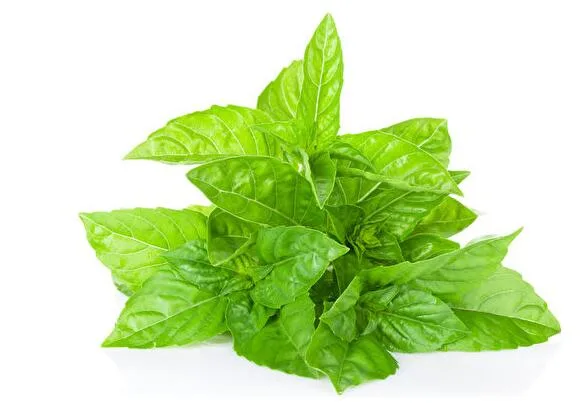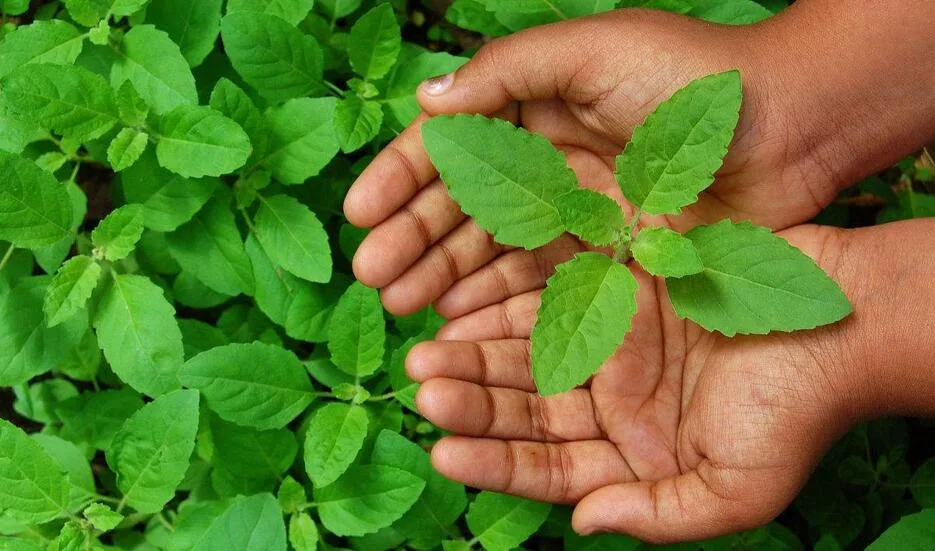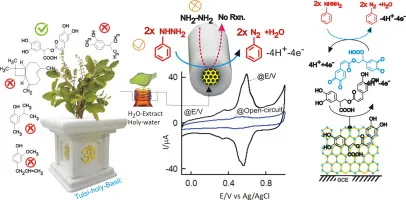Indian Holy Basil Extract has good anti-cancer and healing results
Recent backyard herbs. Inexperienced basil. Remoted on white background
There are three forms of holy basil: extraordinary holy basil (fruity, usually used as spices and seasonings); holy basil tulsi (medicinal, planted in temples); pink and inexperienced holy basil (half pink and half inexperienced leaves, decorative), we are saying medicinal.
Basil leaves, also referred to as basil, golden basil, St. Joseph’s grass and candy basil, are a brief, tender herb of the Labiatae household. Native to tropical Asia. It grows wild in Yunnan, Guangxi, Guangdong, Fujian, Taiwan and different locations in my nation. It likes to develop in well-drained soil. Harvest in September, take away the mud and sand, wash, lower into sections, and dry. It can be used contemporary. The half used is the above-ground a part of the Labiatae plant basil.
Its peak is between 20-60 cm. Its leaves are reverse, mild inexperienced and finely furry, about 1.5 cm lengthy and 1-3 cm vast. It has a powerful, pungent, aromatic odor that tastes like fennel. Basil could be very delicate to chilly and grows greatest in scorching and dry environments. Commonest species are annual vegetation, and a few are perennial vegetation, together with African blue basil and Thai holy basil. Basil is often utilized in Western recipes and Thai delicacies, and can also be utilized in three-cup dishes in Chinese language delicacies. As well as, basil can be used as a standard Chinese language drugs to deal with accidents and snake and bug bites.
Basil leaves are perennial upright herbs, and the entire plant is aromatic. The stem is four-angled, with many branches on the higher half, purple-green, and lined with gentle hairs. The leaves are reverse, the leaf blades are ovate, the apex is pointed, the sides are serrated or total, and there are glandular dots on the underside of the leaves. The cymes are terminal, with about 6 flowers in every whorl, the flower axis is lengthy and pubescent, and the corolla is mild pink. The small nuts are ovate and darkish brown. The flowering interval is from July to September.

The entire plant comprises unstable oils. The primary parts of unstable oil are ocimene, 1,8-cineole, linalool, eugenol, anethole and methyl cinnaminate. It has the features of eradicating dampness, digesting meals, selling blood circulation, detoxifying and selling qi.
It tastes spicy and heat in nature. It has the odor of contemporary cloves. The leaves are heat in nature and are used to organize Italian dishes. They’ve a singular style when combined with garlic and tomatoes, which will increase the style. The clear oil can be utilized so as to add a particular perfume to fragrance or cleaning soap. The leaves can repel mosquitoes and intestinal parasites. It may be used as a seasoning for dishes and might take away fishy smells. It’s principally utilized in Italian dishes.
Basil/Basil and Perilla are each “Perilla” vegetation. In reality, mint, lavender, sage, rosemary, and lemon balm are additionally within the “Perilla” household. The primary motive why basil, basil and nine-layer tower are confused is that they’re all thought-about “kin”. The distinction in translation makes folks extra confused.
Holy basil, also referred to as divine basil, is a magical herb produced in India. Attributable to its highly effective therapeutic impact, nearly each family in India grows this herb. It not solely has a aromatic aroma, however can also be acknowledged as having the impact of prolonging life, so it’s also known as the elixir of life. It comprises a whole lot of helpful compounds and has sturdy antioxidant, antiviral, anti-stress, antibacterial and immune system-enhancing results.

In response to the Conventional Life web site, each quarter cup of contemporary holy basil leaves comprises the next helpful elements: 1% calcium, 1% potassium, 1% magnesium and 1% folic acid; 31% vitamin Ok; 6% vitamin A; 2% vitamin C; 3% manganese.
Scientific trials have confirmed holy basil’s anti-cancer, anti-inflammatory and different well being advantages. Listed below are its many advantages:
1. Forestall mosquito bites: Holy basil could be very efficient in stopping mosquito bites. Inserting a pot of holy basil plant within the window can repel mosquitoes. When you encounter mosquito bites, you may mash the roots and leaves right into a paste and apply it to the affected space, after which reapply it after just a few hours. Its leaves are wonderful nerve tonics.
2. Deal with pores and skin illnesses: Natural cures have efficiently handled ringworm and different pores and skin illnesses by making use of holy basil juice topically. A trial in Thailand discovered that holy basil’s antibacterial properties can successfully deal with pimples. It’s distilled right into a 3% resolution, which might successfully kill the micro organism that trigger pimples.
3. Preserve oral well being: The antibacterial elements in holy basil can shield the mouth and tooth from bacterial invasion. Chewing holy basil leaves is an efficient remedy for oral infections and ulcers. You too can combine the dried leaves with mustard oil and mash them right into a paste to make toothpaste. Use it morning and night time to stop unhealthy breath and pyorrhea.
4. Expel kidney stones: Combine honey and holy basil leaf juice to make a drink. Take it for six months to assist expel kidney stones.
5. Give up smoking: This magical herb will help stop smoking. As a result of it comprises numerous anti-stress elements, it will possibly maintain folks emotionally secure within the face of stress and never take into consideration smoking, thus successfully serving to to stop smoking.

6. Relieve complications: Combine holy basil leaves with sandalwood paste and apply it on the brow to successfully relieve complications.
7. Shield coronary heart well being: Holy basil can forestall coronary heart illness, decrease blood ldl cholesterol, and purify the blood.
8. Forestall colds and fevers: Ingesting holy basil tea incessantly in humid areas can forestall malaria and dengue fever; including salt and cloves to holy basil leaf juice can instantly relieve flu signs; boiling the leaves with cardamom, water, sugar and milk can scale back the physique temperature of sufferers with fever.
9. Relieve abdomen issues: Holy basil leaves can enhance abdomen perform. Its juice is a “panacea” for treating diarrhea and vomiting.
10. Anti-cancer: The Nationwide Heart for Organic Sciences of america discovered via analysis on the biosynthetic genes of holy basil metabolites that these metabolites can be utilized as anti-cancer therapies. The researchers centered on the chemical prevention and anti-radiation results of holy basil, and identified that scientific research have proven that “holy basil and a few of its eugenol phytochemicals can forestall pores and skin, liver, oral and lung cancers, and regulate these results by growing antioxidant exercise, altering gene expression and decreasing cell apoptosis.

Holy Basil Extract DisIntroduction
Holy Basil, scientifically often known as Ocimum tenuiflorum or Ocimum sanctum, is a revered herb in Ayurvedic drugs and Indian tradition. Typically known as “Tulsi” (which means “the incomparable one”), this fragrant plant has been used for hundreds of years to advertise longevity, enhance immunity, and deal with varied illnesses. Fashionable analysis highlights its highly effective antioxidant, anti-inflammatory, and anticancer properties, making it a rising star in pure well being circles.
Sorts of Holy Basil
There are three fundamental varieties:
- Widespread Holy Basil: Used as a culinary herb with a candy, clove-like taste.
- Tulsi (Sacred Basil): Cultivated in temples for its medicinal and religious significance.
- Purple–Inexperienced Holy Basil: Decorative, with variegated leaves.
This text focuses on the medicinal advantages of Tulsi.
Dietary Profile
Per quarter cup of contemporary Tulsi leaves:
- Calcium, potassium, magnesium, and folic acid (1% every)
- Vitamin Ok (31%)
- Vitamin A (6%)
- Vitamin C (2%)
- Manganese (3%)
Well being Benefits of Holy Basil
- Anticancer Properties
- Analysis by the U.S. Nationwide Heart for Organic Sciences discovered that Tulsi metabolites inhibit most cancers cell progress in pores and skin, liver, oral, and lung cancers by enhancing antioxidant exercise and regulating gene expression.
- Eugenol, a key phytochemical in Tulsi, reveals promising chemo-preventive results.
Supply: NIH Study
- Anti-Inflammatory Results
- Tulsi reduces pro-inflammatory cytokines, making it efficient for arthritis and digestive issues.
- Mosquito Repellent
- Planting Tulsi indoors or making use of crushed leaves repels mosquitoes naturally.
- Pores and skin Well being
- A 3% Tulsi extract killed acne-causing micro organism in a Thai research.
- Topical utility treats ringworm and different fungal infections.
- Oral Well being
- Chewing leaves fights unhealthy breath, ulcers, and gum illness. Combine dried leaves with mustard oil for a pure toothpaste.
- Kidney Stone Aid
- Honey-Tulsi juice consumed day by day for six months could assist dissolve kidney stones.
- Stress and Dependancy Administration
- Adaptogenic compounds in Tulsi scale back stress and help smoking cessation by stabilizing feelings.
- Coronary heart Well being
- Lowers LDL ldl cholesterol and improves blood purification.
- Immune Assist
- Common Tulsi tea in humid areas prevents malaria and dengue.
- Digestive Well being
- Relieves diarrhea, vomiting, and indigestion.
The best way to Use Holy Basil
- Tea: Steep leaves in scorching water.
- Paste: Combine with honey or sandalwood for topical use.
- Seasoning: Add contemporary leaves to soups, salads, or stir-fries.
Precautions
- Keep away from extreme consumption throughout being pregnant.
- Seek the advice of a healthcare supplier earlier than utilizing Tulsi alongside medicines.
Conclusion
Holy Basil is greater than a culinary herb—it’s a pure drugs with science-backed advantages. From preventing most cancers to enhancing immunity, its versatility and security make it a priceless addition to holistic wellness routines.
References
